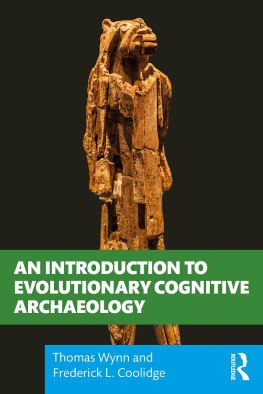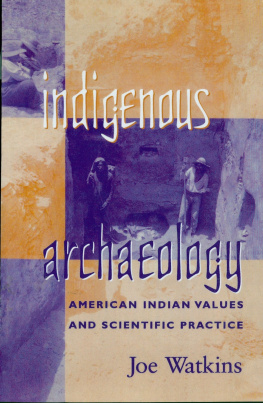ABOUT THE AUTHORS
Thomas W. Neumann received his B.A. from the University of Kentucky, with a major in anthropology and minors in physics, forestry, and English literature. He received his M.A. and Ph.D. in anthropology from the University of Minnesota. He established, then directed for many years, the doctoral program in archaeology at Syracuse University, served as a research associate for the State University of New York Research Foundation, and since 1986 has worked as a corporate archaeologist and research administrator. He has taught at the University of Minnesota, Syracuse University, University of Georgia Honors Program, and Emory University. He currently manages the Diachronics Division at the Pocket Park-Wentworth Analytical Facility. Dr. Neumann and his wife, Mary, live in Lilburn, Georgia, where they garden, brew beer, and generally enjoy life in their virtual village.
Robert M. Sanford received his B.A. in anthropology from the State University of New York (SUNY) College at Potsdam and his M.S. and Ph.D. in environmental science from the SUNY College of Environmental Science and Forestry at Syracuse. Dr. Sanford has worked as a consulting archaeologist and as an environmental regulator. He has taught at Antioch New England Graduate School, the Community College of Vermont, Johnson State College, Onondaga Community College, and SUNY College of Environmental Science and Forestry. He is on the faculty of the Department of Environmental Science at the University of Southern Maine, where he also co-directs the Summer Archaeology Program. He lives in Gorham, Maine, with his wife Robin and children, Corey, Dan, and Morgan.
Karen G. Harry received her B.A. in anthropology from Texas A&M University and her M.A. and Ph.D. in anthropology from the University of Arizona. Currently, Dr. Harry is a faculty member of the Department of Anthropology at the University of Nevada, Las Vegas. Prior to holding this position she worked in the field of cultural resources management, a background that she believes helps her to prepare students to enter the world of professional archaeology. As a consulting archaeologist, she worked for Statistical Research, Inc., a private consulting firm located in Tucson, Arizona; and as a government archaeologist, she served as the Director of Cultural Resources for the Texas Parks and Wildlife Department. She lives in Las Vegas, Nevada, with her husband Mark Slaughter and their two daughters, Maia and Ze.
ACKNOWLEDGMENTS
O ur editor at AltaMira, Jack Meinhardt, encouraged us to revise this book, providing instant and durable support. Assistant editor Marissa Parks guided us through the process. We greatly appreciate the external reviewers, especially Dr. Paul Demers, RPA, of the University of Nebraska, Lincoln. Thanks to Sebago Brew Pub (where Maine archaeologists gather). We thank the following:
- Dr. Nathan D. Hamilton, associate professor of archaeology and director, Summer Archaeology Program, University of Southern Maine. A number of Dr. Hamiltons current and former students also provided comments and suggestions for this revised edition.
- Dr. Mary Spink Neumann (behavioral scientist, Centers for Disease Control and Prevention, Atlanta)
- Robin Sanford (librarian, University of New England)
- Mark Slaughter, archaeologist, Bureau of Reclamation, Boulder City, Nevada
- Sarah Haugh, archaeologist, Tetra Tech
- Kevin Clark, archaeologist, R. Christopher Goodwin & Associates
For the first edition:
We greatly appreciate advice and assistance from the following people: Dr. Mitch Allen, Chad Braley, Dr. Paul Brockington, Jennifer Carden, Angela Cronan, Dr. Dave D. Davis, Hester Davis, Thomas Gresham, Scott Hoffeld, Connie Huddleson, Dr. Benjamin Z. Freed, Dr. Nathan D. Hamilton, Dr. Joseph W. Joseph III, Amy Judd, Dr. Thomas F. King, David Lacy, Dr. Samantha Langley-Turnbaugh, Jerald Ledbetter, Dr. Francis P. McManamon, Paul F. Miller, Dr. Mary Spink Neumann, Paul Nordman, Peggy Nordman, the late Dr. James Petersen, Dr. Adrian Praetzellis, Robin Sanford, Dr. Richard S. Sanford, Virginia Wallace, and Thomas Wheaton.
Credits
Unless otherwise noted, all photographs are by the authors. Copyright for logo used for We learned about archaeology from that text boxes held by T. W. Neumann and used here with permission.
Photographs pp. 155, 157, and 158 (figures 5.1, 5.3, 5.4) provided courtesy of R. Jerald Ledbetter and Southeastern Archeological Services, Inc., Athens, Georgia.
Photographs pp. 204, 206, and 207 (figures 7.1, 7.3, 7.4) provided courtesy of Paul Brockington and Brockington and Associates, Inc., Norcross, Georgia.
REFERENCES
Advisory Council on Historic Preservation (ACHP). Treatment of Archaeological Properties: A Handbook . Washington, D.C.: National Park Service/Department of the Interior, 1991.
. Federal Historic Preservation Case Law, 19661996 . Washington, D.C.:National Park Service/Department of the Interior, 1996. http://www.achp.gov/book/COVER1.html ( Jan. 1, 2009).
. Federal Historic Preservation Case Law Update, 19962000 . Washington, D.C.: National Park Service/Department of the Interior, 2000. http://www.achp.gov/book/COVER1.html ( Jan. 1, 2009).
Allen, Mitch. Reaching the Hidden Audience: Ten Rules for the Archaeological Writer. Pp. 244251 in Public Benefits of Archaeology , ed. Barbara J. Little. Gainesville: University Press of Florida, 2002.
Ambrose, Stephen E. Undaunted Courage: Meriwether Lewis, Thomas Jefferson, and the Opening of the American West . New York: Simon & Schuster, 1996.
Balm, Jane, and Alistair Paterson, eds. Archaeology in Practice: A Student Guide to Archaeological Analysis . Malden, Mass.: Blackwell, 2006.
Bentley, R. Alexander, Herbert D. G.Maschner, and Christopher Chippindale, eds. Handbook of Archaeological Theories . Lanham, Md.: AltaMira Press, 2008.
Black, Stephen L., and Kevin Jolly. Archaeology by Design . Archaeologists Toolkit #1. Lanham, Md.: AltaMira Press, 2003.
Bradley, James W. The Onondaga Iroquois: 15001655: A Study of Acculturative Change and Its Consequences . Ph.D. dissertation, Syracuse University: University Microfilms International, Ann Arbor, 1979.
. Evolution of the Onondaga Iroquois: Accommodating Change, 15001655 . Lincoln: University of Nebraska Press, 2005.
Brady, Nyle C., and Ray R. Weil. The Nature and Properties of Soils . 14th ed. Upper Saddle River, N.J.: Prentice Hall, 2007.
Butler, William B. Significance and Other Frustrations in the CRM Process. American Antiquity 52(4) (1987):820829.
Chenault, Mark L., Richard V. N. Ahlstrom, and Thomas N. Motsinger. In the Shadow of South Mountain: The Pre-Classic Hohokam of La Ciudad de Los Hornos, 19911992 Excavations, Parts I and II . SWCA Environmental Consultants Archaeological Report No. 93-30 (1993). Tucson, Ariz.: SWCA, Inc., Environmental Consultants.
Chesterman, Charles W. The Audubon Society Field Guide to North American Rocks and Minerals . New York: Knopf, 1979.
Coates, Earl J., and Dean S. Thomas. An Introduction to Civil War Small Arms . Gettysburg, Pa.: Thomas Publications, 1990.
Common Ground Alliance. http://www.commongroundalliance.com/ ( Jan. 3, 2009).
Council on Environmental Quality. Regulations for Implementing NEPA. Washington, Government Printing Office, 1978 (updated with periodic revisions, available online at http://www.nepa.gov/nepa/regs/ceq/toc_ceq.htm) (Sept. 18, 2009).








